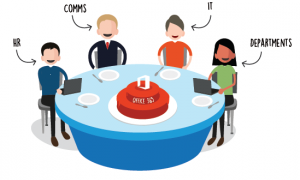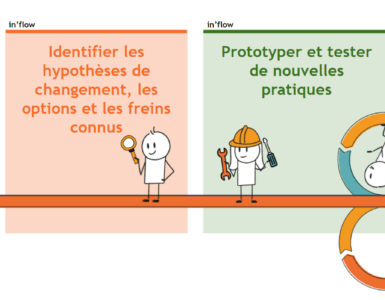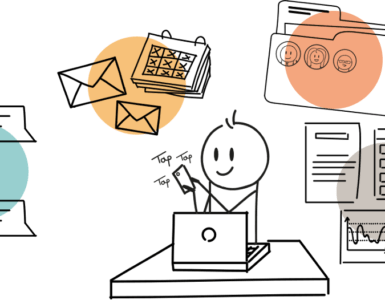On October 15th, we released our second study on Microsoft collaborative tools. The English version of the study is now out! Our study aims at giving you (digital transformation leaders) a complete overview of the Office 365 bundle and points of reference for developing usages within your organisation.
Download the study here (free):
Follow the guide!
Whatever your role and wherever you stand in the hierarchy of your organisation, whatever your duties, areas of expertise and the department or unit in which you work (Communications, Information Systems, Human Resources, Business Development, etc.) and whatever the sector or size of your organisation, this study is for you!
Dinner is ready, digital transformation leaders!
What’s in it for you?
Across the four parts of our study, find how we tried to cover it all for you and give a sense to what has been behind Office 365 various updates, changes and new application components, regarding the way our organisations change and develop new practices.
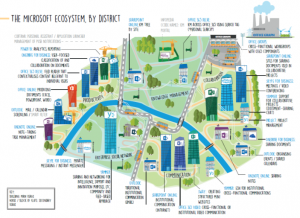
What if Microsoft Office 365 was a city?
How to answer the question ‘Which tool for which usage?’
Traditionally, collaboration within businesses roughy implied employees working together on documents. This conception can be extended to include conversations between employees, project-specific groups or discussions about documents.
Co-workers now are able to use several tools to communicate, share and collaborate. Practices are changing and tools are more and more abundant. Is it right to build a SharePoint site for project collaboration? Or is Yammer sufficient enough for that purpose? Is Sway a relevant tool to integrate to the global Communications picture?
Such cloud services can bring new business value. They also raise the so-called question ‘Which tool for which usage?’. Following a practical approach, we tried to define the right tool to use for a specific usage, whether you want to communicate, manage documentation, gain individual and collective productivity, collaborate on innovation or business processes, and develop expertise and knowledge…
Want some concrete examples and a ‘which tool for which usage’ understandable at a glance? Key findings are available in our study…
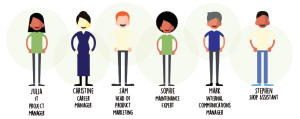
Discover how they can use Office 365 tools to accomplish their day-to-day missions
Developing usages: lean on local stakeholders
By choosing to work with Office 365, businesses delegate the design of their collaborative tools. They focus their activities on supporting the development of usages. Each product evolves little by little, very regularly, without the company having any control over the timeframe. For support teams, it is a case of getting to grips with a new approach, rather than seeing it as a problem in itself. This ongoing evolution avoids the knock-on effects of jumps between versions. Plus, in practice, users generally find their feet by themselves.
Collaborative usages are passed on by users copying what others do and users do not take the time to follow the training courses offered to them. Knowing that, project teams can boost these learning methods by supporting practice leaders to act as pioneers in exploring new practices and encouraging others to follow their lead.
How to lean on these people? How to inspire without restraining? Find more about it in our study…
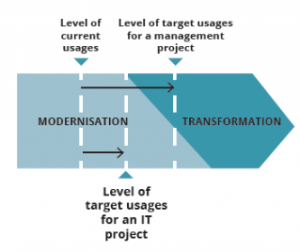
From modernisation to transformation
Reach out to us to discuss about it!
As we love to interact with you, be challenged and talk about your contexts and projects, feel free to contact us:
- Bastien Le Lann, Head of Analysis and Design Division, Twitter @BastienLeLann or [email protected]
- Guillaume Gouraud, Consultant and Solutions Expert, Twitter @GGouraud or [email protected]
Plus, your feedbacks are valuable to us – please tell us what you think about our work!
Who are we?
Lecko is a consulting firm specialized in digital transformation. We bring a deep expertise and accurate methodologies to support companies gaining in efficiency. From the scoping phase to comforting companies in chosing the right solutions, we also try to anticipate cultural and organizational changes, as well as encouraging the development of innovative work practices. We dedicate 20% of our ressources in research and development focused on finding the best solutions of the market and developing methodologies.

